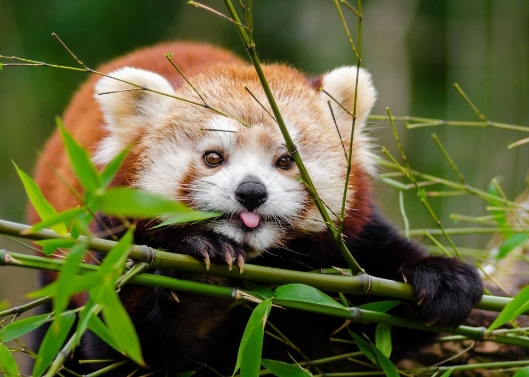Red pandas, also known as “firefoxes,” are adorable, tree-dwelling mammals native to the forests of the Eastern Himalayas. These charming creatures are renowned for their distinctive red fur and bushy tails, but their culinary preferences are equally fascinating.
A Diet of Bamboo and Fruits
Red pandas are primarily herbivores, with bamboo making up the bulk of their diet. They have a special adaptation that allows them to easily digest the tough cellulose fibers found in bamboo. In the wild, red pandas spend up to 13 hours a day foraging for bamboo shoots, leaves, and stems.
In addition to bamboo, red pandas also enjoy a variety of fruits, including apples, bananas, and grapes. When available, they may also feast on berries, nuts, and eggs. This diverse diet helps to provide the essential nutrients red pandas need to thrive in their natural habitat.
Opportunistic Feeders
Despite their preference for bamboo and fruits, red pandas are opportunistic feeders and will occasionally consume insects, birds, and small mammals. In captivity, red pandas may be offered a diet that includes high-quality commercial pellet food specially formulated for their nutritional needs.
Feeding Habits
Red pandas are solitary animals and are typically nocturnal, meaning they are most active at night. They are known to be secretive and shy, spending much of their time hidden in the treetops. This behavior extends to their eating habits, as red pandas are known to carefully select and hold their food with their front paws while sitting upright.
Red pandas also have a unique adaptation when it comes to eating bamboo. They have a modified wrist bone that acts as a thumb, allowing them to grasp bamboo stems and bring food to their mouths with ease. This dexterity helps red pandas efficiently navigate their preferred diet of bamboo and fruits.
In conclusion, red pandas are fascinating creatures with a diverse diet and unique eating habits. By exploring their culinary preferences, we can gain a deeper understanding of these charming animals and the important role they play in their ecosystem.

